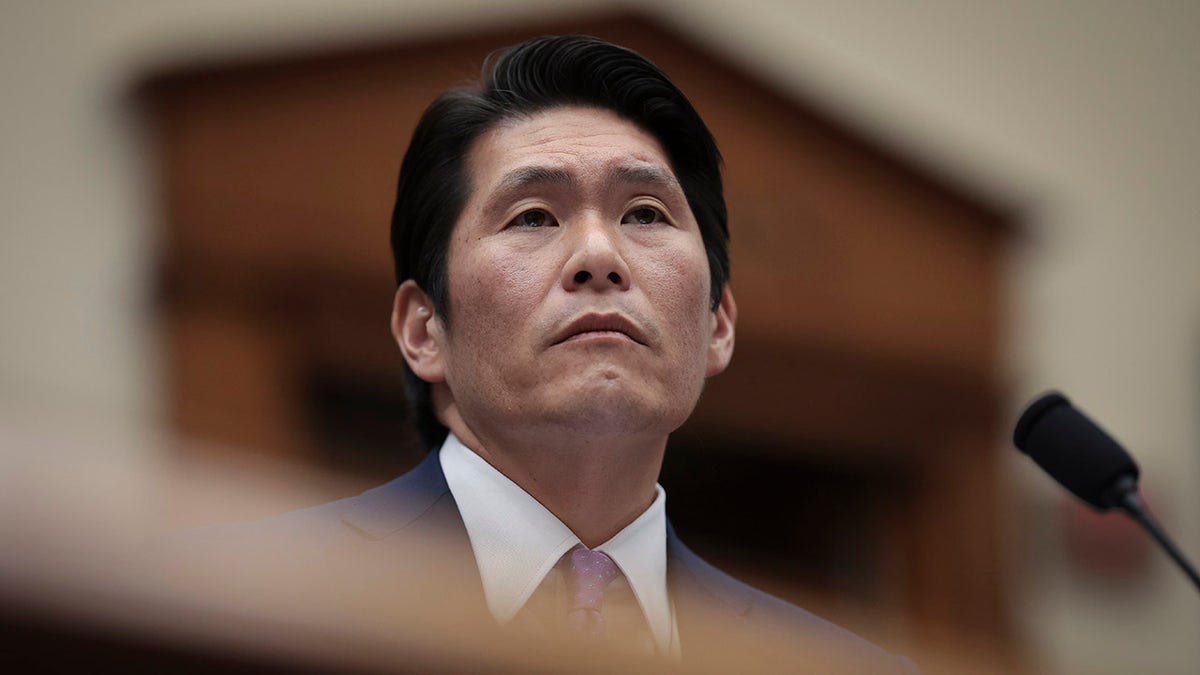INTERNACIONAL
Medio Oriente se hunde en el peor de los escenarios: EE.UU. presiona a Irán y envía recursos militares

Medio Oriente se hundió en el peor de los escenarios. El área vive hoy una virtual guerra abierta entre las dos principales potencias de la región.
El ataque de Israel contra instalaciones nucleares iraníes y el rápido contragolpe de Irán con el lanzamiento de unos 100 misiles sobre territorio israelí, es solo el comienzo de un conflicto de impacto regional.
Hay amenaza de nuevos ataques desde ambos lados. La alarma es generalizada en los dos países. En tanto, Estados Unidos ya ha comenzado a trasladar recursos militares a la zona y despliega su particular diplomacia bélica.
Leé también: Cómo se preparó el ataque de Israel contra el programa nuclear de Irán desde el propio corazón de Teherán
Israel, ya inmerso en una guerra devastadora en Gaza, comenzó a llamar a reservistas ante la emergencia. La retórica maquinaria de venganza funciona a pleno en Teherán. Ahora, todo puede pasar. La región llegó a su punto de quiebre.
¿Israel está en condiciones de destruir el poderío nuclear iraní?
Israel golpeó objetivos militares, científicos y las instalaciones nucleares de Isfahan, Fordo y Natanz, donde se concentra la mayor parte de la producción de uranio iraní. Pero no tocó, por ahora, a la vital infraestructura petrolera. Ese podría ser el próximo objetivo, dijo una fuente militar israelí al Canal 12.
“Pero la fuerza militar por sí sola no puede destruir el programa nuclear de Irán. Solo Donald Trump puede obligar a Irán a abandonarlo”, dijo el jefe del Consejo de Seguridad Nacional de Israel, Tzaji Hanegbi. Misiles lanzados desde Irán son interceptados en el cielo de Tel Aviv (Foto: REUTERS/Jamal Awad)
Trump viene presionando a Teherán a aceptar un acuerdo nuclear. De hecho, venía negociando con Irán en las últimas semanas. Una nueva ronda de diálogo estaba prevista para el domingo en Omán, pero el proceso estalló en mil pedazos.
A su juicio, el ataque israelí les dará a los iraníes un mayor incentivo para llegar a un pacto: “Quizá ahora negocien seriamente. (…) Yo no pude conseguir un acuerdo con ellos en 60 días. Estuvieron cerca, deberían haberlo hecho. Quizás ahora lo consigan”, dijo el presidente estadounidense.
Leé también: Cómo es el poderío aéreo iraní: un arsenal capaz de golpear Israel y los intereses de EE.UU. en Medio Oriente
Pero en Teherán se habla de venganza, no de más negociaciones. Incluso, el canciller iraní, Abás Araqchi, rechazó “los llamados a la moderación” desde la Unión Europea.
El analista palestino Mkhaimer Abusada, exjefe del Departamento de Ciencias Políticas de la Universidad Al-Azhar en Gaza, alertó a TN que “Irán se siente engañado por Estados Unidos”.
Según el analista, “Estados Unidos permitió los ataques israelíes contra Irán. Por lo tanto, podría resultar difícil para los iraníes volver a negociar en un futuro previsible con los estadounidenses. Los iraníes darían la bienvenida a otros países, tal vez más a los europeos».
Sobre el futuro del conflicto, Abusada opinó: “Habrá represalias iraníes y nuevos ataques israelíes, pero al final el conflicto quedará contenido. Irán no tiene la capacidad de luchar contra Israel”.
Estados Unidos moviliza recursos militares a la zona
Israel espera ahora la ayuda estadounidense. No solo para interceptar los misiles que llueven desde Irán, algo que -se descuenta- está en pleno desarrollo, sino para obligar a Teherán a abandonar sus ambiciones atómicas.
La movilización bélica está en marcha. La prensa israelí anunció que un destructor estadounidense, capaz de defenderse de misiles balísticos, se está trasladando al Mediterráneo oriental.
Leé también: Máxima tensión en Medio Oriente: la Argentina reforzó la seguridad en la embajada de Israel y la AMIA
Según The Israel Times, Wahington está desplazando recursos militares a Medio Oriente, incluyendo barcos, para ayudar a Israel.
El informe reveló que la Armada ordenó al destructor USS Thomas Hudner navegar desde el mar Mediterráneo occidental hacia el Mediterráneo oriental. Además, un segundo destructor empezó a avanzar hacia la zona.
Se estima que unos 30 mil soldados estadounidenses están desplegados en bases de Medio Oriente. Otras fuentes sostienen que en los últimos meses esa cifra se elevó a 40 mil.
La Armada de Estados Unidos tiene activos adicionales listos para dirigirse a la zona, en especial sus portaaviones y buques de guerra. El USS Carl Vinson está en el Mar Arábigo; es el único portaaviones de la región. El portaaviones estadounidense USS Carl Vinson (Foto: AFP)
El USS Nimitz se encuentra en el Océano Indico y el USS George Washington salió de su puerto en Japón, siempre según The Israel Times. Ambos podrían dirigirse a la zona si se agrava la situación, dijeron funcionarios estadounidenses.
Trump, fiel a su estilo, presiona con su poderío militar y despliega su diplomacia bélica para acorralar a Irán.
Habrá que ver ahora hasta dónde está dispuesto a llegar el gobierno iraní en su retórica de retaliación. Si se conforma con mostrar sus músculos para consumo interno, la tensión se irá apagando, pero solo si Israel decide ponerle un freno a su vasta ofensiva. En caso contrario, la región quedará bajo fuego.
Israel, Irán
INTERNACIONAL
US carries out 8th strike on alleged drug vessel, this time in Eastern Pacific, Hegseth says

NEWYou can now listen to Fox News articles!
The U.S. military carried out another strike on a suspected drug vessel, this time in the Eastern Pacific, Secretary of War Pete Hegseth announced Wednesday.
The strike Tuesday against a boat allegedly carrying drugs is the eighth conducted by the Trump administration. The previous seven happened in the Caribbean.
«Yesterday, at the direction of President Trump, the Department of War conducted a lethal kinetic strike on a vessel being operated by a Designated Terrorist Organization and conducting narco-trafficking in the Eastern Pacific. The vessel was known by our intelligence to be involved in illicit narcotics smuggling, was transiting along a known narco-trafficking transit route, and carrying narcotics,» Hegseth said.
«There were two narco-terrorists aboard the vessel during the strike, which was conducted in international waters. Both terrorists were killed and no U.S. forces were harmed in this strike,» he added.
3 KILLED IN US STRIKE ON COLOMBIAN ELN VESSEL SMUGGLING NARCOTICS, HEGSETH SAYS
The suspect drug smuggling vessel is shown at left, moments before it was destroyed in a U.S. strike on Tuesday, Oct. 21, 2025. (X.com/SecWar)
Earlier this week, Hegseth announced that three alleged narco-terrorists were killed in a U.S. strike on a drug smuggling vessel affiliated with Colombia’s National Liberation Army.
That «lethal kinetic strike» happened Friday in international waters at the direction of President Donald Trump, Hegseth wrote in a post on X.
«The vessel was known by our intelligence to be involved in illicit narcotics smuggling, was traveling along a known narco-trafficking route, and was transporting substantial amounts of narcotics,» Hegseth wrote. «There were three male narco-terrorists aboard the vessel during the strike—which was conducted in international waters.»
«All three terrorists were killed and no U.S. forces were harmed in this strike,» he added.

The suspect drug smuggling vessel is shown at left, moments before it was destroyed in a U.S. strike on Tuesday, Oct. 21, 2025. (X.com/SecWar)
Colombia’s Ejército de Liberación Nacional (ELN) is a designated terrorist organization. Hegseth likened the Colombian rebel group to the al Qaeda terror group founded by Usama bin Laden in Afghanistan.
TRUMP GOES ALL-OUT AGAINST COLOMBIA’S PETRO AFTER CLAIMS DRUG STRIKE KILLED FISHERMAN: WHAT WE KNOW
The death toll from the Trump administration’s military campaign against suspected drug-smuggling vessels is at least 34. The operations began last month and are part of Trump’s broader effort to dismantle transnational cartels by force.
Last Thursday, the U.S. military carried out a strike on what Trump later called a «very large drug-carrying submarine» in the Caribbean, killing two suspected narco-terrorists and capturing two others alive.

The U.S. killed six alleged drug traffickers on a boat in international waters near Venezuela, President Donald Trump announced Oct. 14, 2025. (realDonaldTrump/Truth Social)
CLICK HERE TO GET THE FOX NEWS APP
A separate strike on Tuesday killed six suspected smugglers aboard a vessel off the coast of Venezuela.
south america,drugs,military,world
INTERNACIONAL
Jack Smith defends subpoenaing Republican senators’ phone records: ‘Entirely proper’

NEWYou can now listen to Fox News articles!
Former special counsel Jack Smith is standing by his 2023 decision to subpoena several Republican lawmakers’ phone records, calling the move «entirely proper» and consistent with Justice Department policy.
Smith said through his lawyers in a letter obtained by Fox News Digital that the subpoenaed data, known as toll records, belonging to eight senators and one House member were carefully targeted to support his investigation into President Donald Trump’s alleged subversion of the 2020 election.
«As described by various Senators, the toll data collection was narrowly tailored and limited to the four days from January 4, 2021 to January 7, 2021, with a focus on telephonic activity during the period immediately surrounding the January 6 riots at the U.S. Capitol,» Smith’s lawyers wrote Tuesday to Senate Judiciary Committee Chairman Chuck Grassley, R-Iowa.
JACK SMITH INVESTIGATORS NEED TO ‘PAY BIG’ FOR JAN. 6 PHONE RECORDS PROBE, WARNS SEN. GRAHAM
Former special counsel Jack Smith delivers remarks on an unsealed indictment, including four felony counts against President Donald Trump, Aug. 1, 2023, in Washington. (Drew Angerer/Getty Images)
Toll records do not reveal the contents of phone calls but instead reveal when calls were made and to whom.
Smith’s lawyers said that although Grassley, who brought the subpoenas to light, has not reached out to Smith, they felt compelled to write to the chairman to address claims from Republicans that Smith improperly spied on lawmakers.
Grassley responded to the letter, saying he would continue an unbiased probe into Arctic Frost, the name of the FBI investigation that led to Smith’s election-related prosecution of Trump.
«I’m conducting an objective assessment of the facts&law like he says he wants So far we exposed an anti-Trump FBI agent started the investigation/broke FBI rules &only REPUBLICANS were targeted SMELLS LIKE POLITICS,» Grassley wrote on X.
The targeted senators included Republican Sens. Marsha Blackburn of Tennessee, Josh Hawley of Missouri and Lindsey Graham of South Carolina.
In addition to the eight senators, Sen. Ted Cruz, R-Texas, told Fox News’ Sean Hannity Tuesday that he recently discovered Smith also attempted to subpoena his toll records but that his phone company, AT&T, did not hand them over.
DEM REP DEFENDS DOJ OBTAINING GOP SENATOR CALL RECORDS IN 2023: ‘YOU WEREN’T SURVEILLED’

Sen. Ted Cruz, R-Texas. (Kayla Bartkowski/Getty Images)
The Republicans have broadly claimed they were inappropriately spied on, and compared Arctic Frost to the Watergate scandal.
Smith’s lawyers emphasized the normalcy of seeking out phone records and said that public officials are not immune from investigation.
Smith brought four criminal charges against Trump alleging he illegally attempted to overturn the results of the 2020 election, but he dismissed the charges after Trump won the 2024 election, citing a DOJ policy that discourages prosecuting sitting presidents.

Former special counsel Robert K. Hur testifies before the House Judiciary Committee on March 12, 2024, in Washington. (Win McNamee/Getty Images)
Former special counsel Robert Hur sought toll records during his investigation into former President Joe Biden’s handling of classified documents. The DOJ subpoenaed phone records of former Democratic Sen. Robert Menendez, who is serving prison time after he was convicted in 2024 of corruption charges.
The first Trump administration subpoenaed phone records of Rep. Eric Swalwell, D-Calif., and then-Rep. Adam Schiff, D-Calif., and dozens of congressional staffers from both parties as part of a leak investigation.
Former DOJ inspector general Michael Horowitz warned in a report about the leak probe that lawmakers’ records should only be subpoenaed in narrow circumstances because it «risks chilling Congress’s ability to conduct oversight of the executive branch.»
CLICK HERE TO GET THE FOX NEWS APP
Smith’s lawyers also disputed FBI Director Kash Patel’s accusations that he attempted to hide the subpoenas «in a lockbox in a vault,» noting that the former special counsel mentioned subpoenaing senators’ records in a footnote of his final special counsel report.
«Moreover, the precise records at issue were produced in discovery to President Trump’s personal lawyers, some of whom now serve in senior positions within the Department of Justice,» Smith’s lawyers said.
Read Smith’s letter below. App users click here.
justice department,fbi,senate,chuck grassley,politics,lindsey graham,donald trump,ted cruz
INTERNACIONAL
M. Night Shyamalan sorprende con una película de amor: “Quería hacer algo diferente”

Incluso M. Night Shyamalan —conocido por hacer películas más oscuras como Sexto sentido y Señales”— a veces busca la luz. “Acabo de terminar tres películas realmente oscuras, Viejos, Llaman a la puerta y Trampa, que son historias muy intensas donde los personajes son súper, súper oscuros y complicados, y quería hacer algo diferente”, dijo el director.
Encontró una oportunidad interesante para colaborar en una nueva novela de romance sobrenatural llamada Remain junto a Nicholas Sparks. Sí, ese Nicholas Sparks: el rey de los dramas románticos como Diario de una pasión y Un paseo para recordar.
Los libros coescritos son una tendencia candente en el mundo editorial en este momento. Reese Witherspoon y Harlan Coben tienen una nueva novela. James Patterson se ha asociado con Bill Clinton y Dolly Parton en libros. Sin embargo, esta colaboración es diferente en que Shyamalan escribió el guion y Sparks aceptó escribir una novela basada en esa historia. Una película de Remain —protagonizada por Jake Gyllenhaal y Phoebe Dynevor— ya terminó su producción y se estrenará el próximo año.

“No creo que nadie haya hecho lo que acabamos de hacer, que fue tomar la misma historia e ir simultáneamente a hacer nuestras cosas por separado”, dijo Sparks. “No es de manera lineal. Son dos personas haciendo dos formas de arte diferentes a partir de la misma historia. Confié en él al 100% para hacer la mejor versión cinematográfica posible de esa historia y él confió en mí”.
Ambos se cruzaron hace años cuando le preguntaron a Shyamalan si querría adaptar la novela de Sparks El diario de una pasión en una película. El trabajo terminó en manos de Nick Cassavetes, pero Shyamalan dijo que la obra de Sparks “siempre representó algo mágico para mí”. Significaba algo para él que le confiaran una historia tan querida.
En una entrevista conjunta, Nicholas Sparks y M. Night Shyamalan hablan sobre trabajar juntos, películas de terror y ensalada de pollo. Las respuestas han sido editadas por claridad y brevedad.

—Al principio, ustedes dos trabajando juntos parece una pareja poco probable, pero los géneros sobrenatural y romántico tienen mucho en común.
SPARKS: No somos los primeros en incursionar en esto. La película más grande de 1990 fue Ghost. Shakespeare solía poner fantasmas en sus obras.
SHYAMALAN: Creo que el amor es un concepto sobrenatural. Es una mitología en la que todos creemos, pero sigue siendo una mitología, una mitología sobrenatural de que existe “el indicado”. El “destinado” que conoces en la cafetería y sabes que estaba destinado a ser, y luego todas las cosas que suceden porque se conocieron.
—Night, dices que te acercaste a Gyllenhaal a principios de año para este papel. Cuando lo hiciste, ¿le dijiste que también habría una novela escrita por Sparks?
SHYAMALAN: Debo haberlo hecho. Pero fue un momento tan inusual porque había terminado de escribir el guion, presioné guardar, corrí para subirme al auto e ir a Nueva York para el cumpleaños de mi hija. En el auto suena el teléfono, y es Jake. Y yo, “¿Qué pasa, amigo?” No habíamos hablado en cinco años, o más. Y él dice, “Me encantaría estar en una de tus películas”. Y yo respondí, “Eso es tan raro. ¿Dónde estás?” Y él, “Estoy en Nueva York”. Le dije, “Bueno, yo voy a Nueva York. ¿Quieres tomar un té?”
Tuve la corazonada de que el universo estaba haciendo algo. Así que llamé a mi asistente. Le dije, “Imprime el guion”. Así que solo estábamos tomando té y poniéndonos al día. Y él me contaba lo enamorado que está y lo feliz que está y enamorado. Y le dije, “¿Sabes qué? Toma”. Se quedó en shock. Me llamó dos días después y dijo, “Estoy dentro. Me encanta”. Fue una especie de cosa extraña y hermosa.

—¿El libro sigue el guion al pie de la letra o viceversa?
SPARKS: Como cualquier adaptación, no. Lo primero que dije cuando leí su guion fue, “Oye, esto es genial. Por supuesto, no se parecerá en nada a mi novela. Es completamente diferente”. Night dijo básicamente lo mismo.
SHYAMALAN: Creo que para el público será muy interesante. Podrán señalar las diferencias y preguntar, “¿Por qué Nicholas hizo eso con el personaje y la historia de fondo? ¿Por qué Night hizo esto?” Nuestro diálogo no es el mismo.
—Night, estamos en temporada de Halloween. ¿Hay alguna película —además de las tuyas— que recomiendes ver?
SHYAMALAN: El exorcista, por supuesto, siempre está ahí. Está Juego de inocentes. La casa embrujada, la película de 1963 de Robert Wise. Y la película japonesa Cure.
Fuente: AP

 CHIMENTOS3 días ago
CHIMENTOS3 días agoLa cruda confesión del Turco Naim a 1 año de la separación de Emilia Attias: «Me di cuenta que hay que aprender a estar solo»

 CHIMENTOS2 días ago
CHIMENTOS2 días agoPampita recibió un video inesperado de su hija Blanca en el Día de la Madre y no pudo contener la emoción

 POLITICA2 días ago
POLITICA2 días agoDonald Trump habló sobre la ayuda económica de Estados Unidos: “La Argentina está peleando por su vida”



























